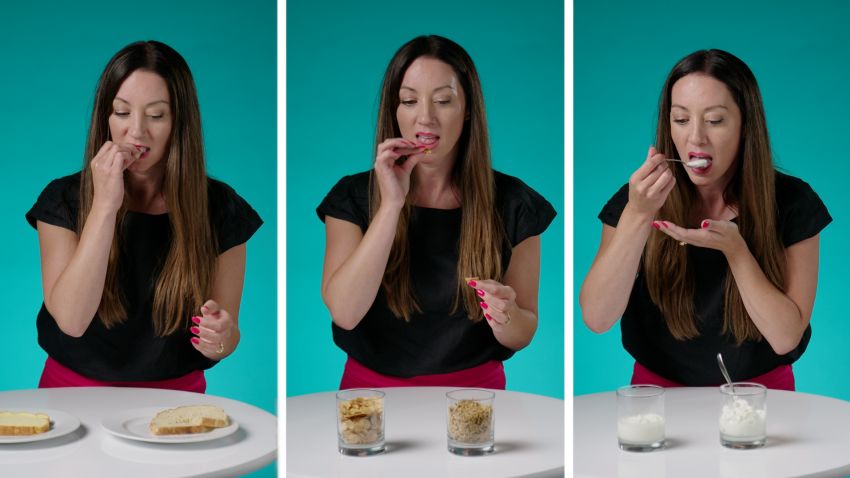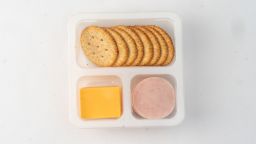Editor’s Note: Dr. Hasan Merali is an associate professor in the Department of Pediatrics, McMaster University. His first book, “Sleep Well, Take Risks, Squish the Peas: Secrets from the Science of Toddlers for a Happier, More Successful Way of Life,” was published in March 2024. The opinions expressed in this article are his own. Read more opinion at CNN.
When I was 10 years old, I used to happily unseal a Lunchables and enjoyed making mini sandwiches from crackers, cheese slices and some form of deli meat. It tasted good. But what I didn’t know at the time (and neither did my mom) was the negative impact eating ultra-processed foods (UPFs) had on my body.

That was the mid-1990s, and nutritional research has come a long way since then. So why are we now feeding Lunchables to children as part of the National School Lunch Program (NSLP)? To make matters worse, Consumer Reports evaluated the nutrition of two Lunchables kits available in schools and discovered that they have higher sodium levels than the Lunchables kits sold in grocery stores.
Now, we can’t be fooled with a stamp that says these lunch kits are an “excellent source of protein,” right? This doesn’t mean that these lunch kits are healthy. Sure, there is “100% Freshness Guaranteed,” but that’s because of preservatives such as sodium nitrite.
In a statement to CNN, Kraft Heinz, the maker of Lunchables, said that the company has taken action to better the nutrition profile of Lunchables, including partnering with Fresh Del Monte to make Lunchables with fresh fruit, and “reducing the sodium in all Lunchables crackers by 26%.”
“All our foods meet strict safety standards that we happily feed to our own families. We are proud of Lunchables and stand by the quality and integrity that goes into making them,” Kraft Heinz said.
I want to be clear: Getting free or low-cost meals to millions of children is important, and the USDA should be commended on how the program is run. Started in 1946, the NSLP now reaches more than 30 million children. This is critically important as over one in five children live in food-insecure households. And not all countries are so fortunate as to have a program like this. In Canada, for example, a country that often outperforms the US in public health measures such as vaccination rates, there is no national food program for children. An investment to get this program started was only announced this month.
But the US can do so much better in terms of the types of meals we are providing our children. The decision to allow Lunchables to be served as part of the NSLP is not a step in the right direction.
Would you want to eat one?
Lunchables are a type of UPF, foods that contain chemical additives such as artificial flavors. The turkey and cheddar Lunchables, served as part of the NSLP, has “smoke flavor added.”
In a study published in February in the British Medical Journal, eating more UPFs was associated with a higher risk of obesity, cardiovascular disease, depression and several other adverse health outcomes. Eating these types of foods has also been linked to cognitive decline in adults. And conversely, reducing UPF consumption in children can substantially reduce obesity.
One of the challenges faced by the USDA is bringing the NSLP in line with the latest Dietary Guidelines for Americans (DGA), although they are making progress. In a study published last year in the American Journal of Clinical Nutrition, the authors compared current school meal standards from 2010 to the latest 2020-2025 DGA. They found that implementation of the DGA standards would significantly decrease body mass index (BMI) and blood pressure. Even incomplete implementation of the standards would prevent more than 9,000 deaths from cardiovascular disease, diabetes and cancer over the long term. The study also demonstrated that there would be $15.9 billion saved in medical costs if partially implemented and $19.3 billion saved if fully implemented.
Providing more nutritious food to kids has benefits both in terms of the health and medical cost savings. It also reduces dietary disparities across income and race.
We have done this in the past and can do it again. After the 2010 Healthy, Hunger-Free Kids Act was passed, nutrition quality improved. This is particularly important as school meals are often the best quality meal a child will get during the day. Meals that adhered to a higher nutritional standard were also thrown away less, according to a study published in Childhood Obesity in 2015.
And although the USDA should be applauded for announcing recent changes to the school nutrition standard, to better align the food we serve our kids with current guidelines, we can do so much more. The current plans focus on reducing added sugars and sodium, and increasing the consumption of whole grains. But what about UPFs?
What we need is to start integrating language around UPFs explicitly into national dietary guidelines as other countries have done. This is not only important for children, but for all of us.
Several countries, particularly in Latin America, are taking this problem seriously. Colombia, for example, introduced a tax on UPFs in 2023. And taxes work. A modeling study published in Public Health Nutrition in 2022 estimates a 20% tax would reduce purchases of UPFs by 24%. (Notably, despite action taken to address food insecurity in Colombia, half of Colombian households have marginal food security, according to a report from the World Food Programme.)
And when it comes to protecting children, Chile stands out. In the last decade, Chile banned the sale and distribution of all UPFs in schools. Recognizing that children are highly vulnerable to food advertising, Chile went a step further and banned advertising of these products to children. They even banned cartoon characters and mascots when it came to UPFs. Tony the Tiger no longer appears on Frosted Flakes cereal boxes in the country. This is what child advocacy looks like.
And while we may be many years away from taxes, school cafeteria bans and advertising restrictions on UPFs, we need to start somewhere. First, we should incorporate language around UPFs in policy documents which so far is largely absent. Once we can identify the problem, then we can start to set targets. We can’t do it all at once. But we could set targets like the USDA did to reduce sugar and salt intake. France, which set a 20% reduction goal in UPF consumption over three years, provides a great model to follow.
Thirty years later, that appetizing Lunchables is no longer appetizing. Instead of crunchy crackers, delicious cheese and flavorful meat slices, I see salt and additives. Children need stronger policies. They deserve better food.





